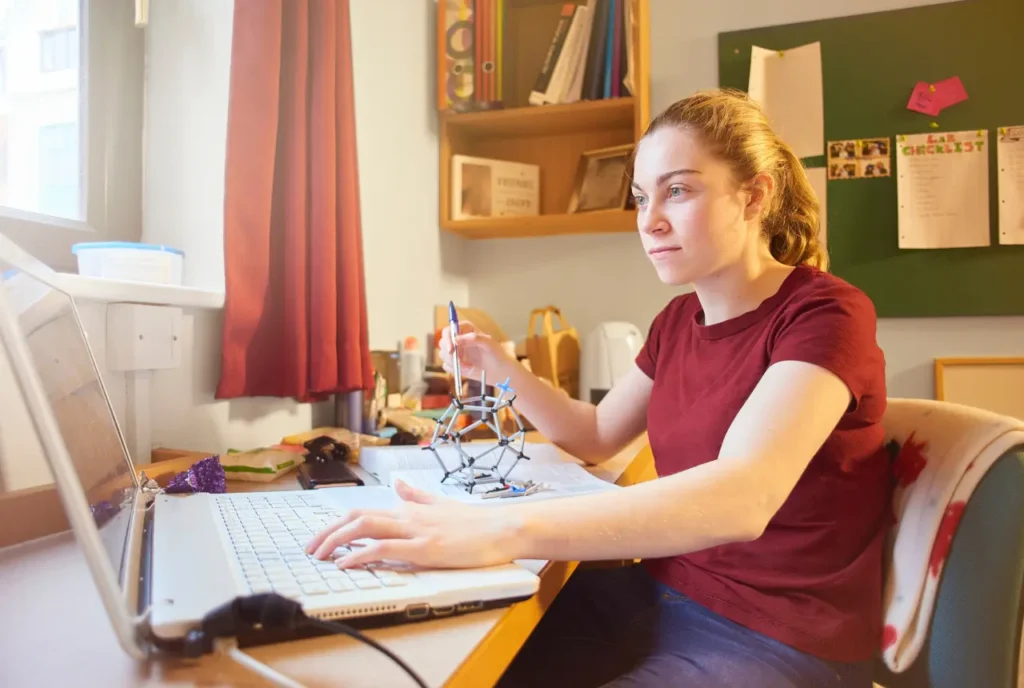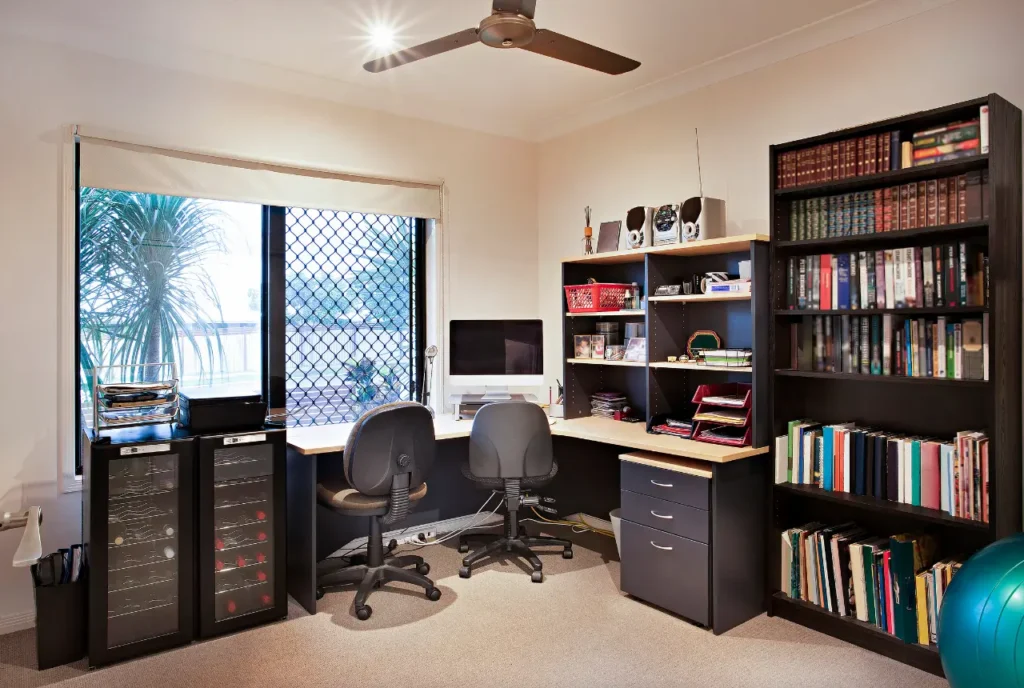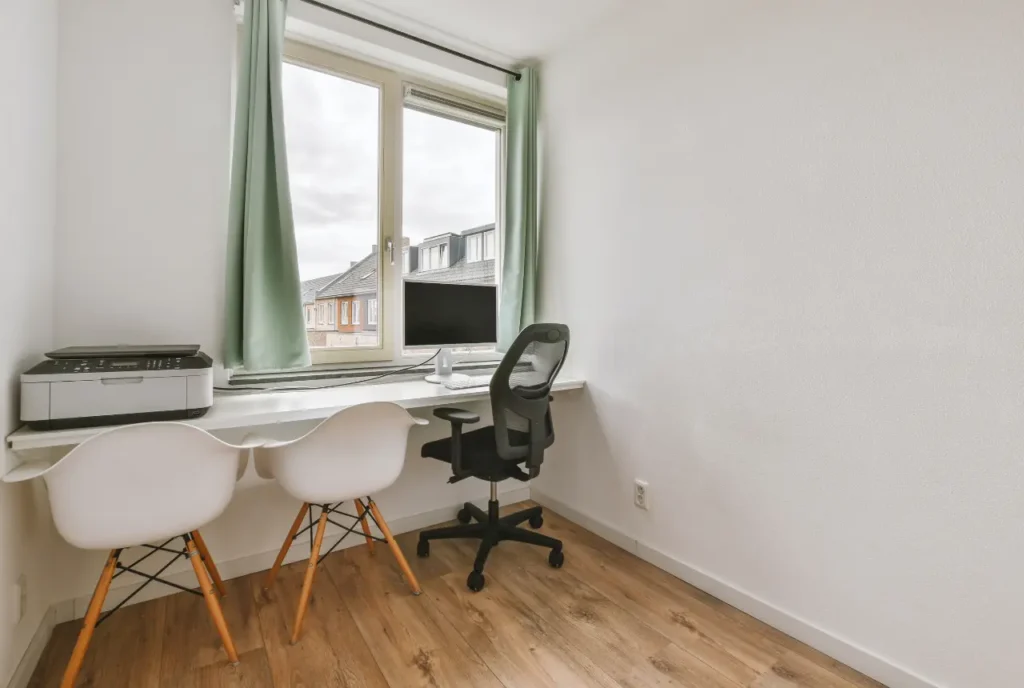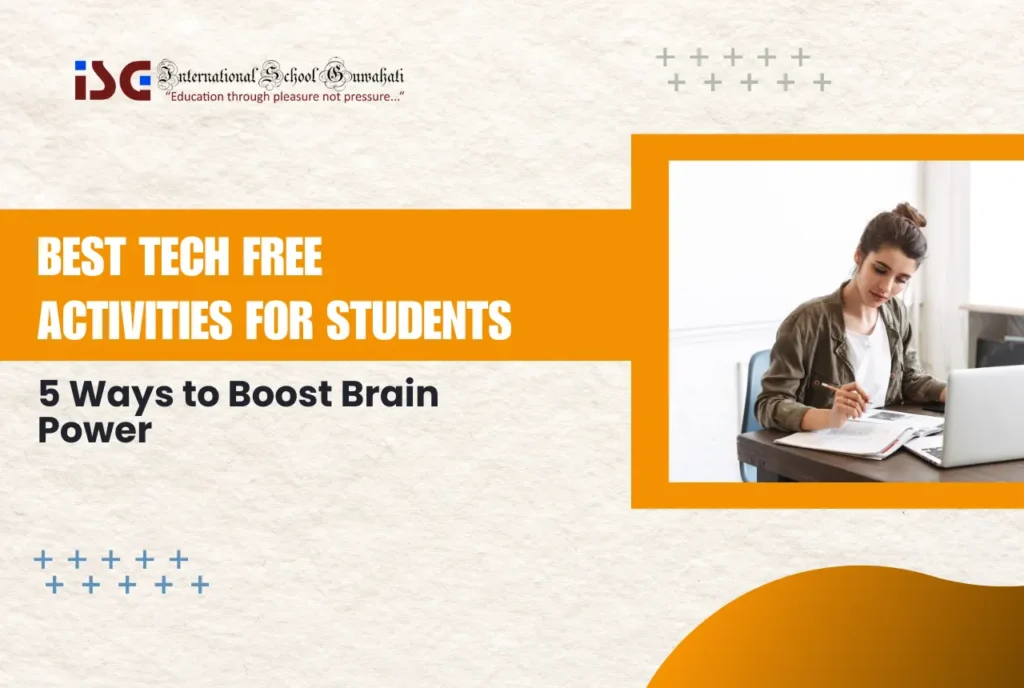![]()
Have you ever felt like you could achieve so much more with your studies if you had the proper environment?
You are not alone!
A dedicated study environment can help, not only little children but adults as well, to focus, concentrate, and get the most out of their study session.
However, creating the right study space at home can be difficult. The little area and all the distractions that we get are enough to make anyone slow down and get bored.
Therefore, we are here with some tips on how to create a study space to study effectively.
We will go over it step by step from establishing the ideal atmosphere to increasing focus and cutting down on distractions.
Find out how to organize your study materials and other supplies to have a productive time.
So grab your notepad and laptop because it is time to create a learning environment that will set you up for academic success!
6 Essential Tips on How to Create a Study Space
1. Find Your Ideal Study Environment

What is the first step in studying space domination? Picking the appropriate space and environment for it! Consider aspects such as noise level, temperature, and natural lighting.
Some people like a quiet spot in their room, while others thrive in the focused quietness in the setting of a library.
Different students and people have different learning techniques and approaches, therefore, choosing a study environment that suits your approach is crucial.
2. Establish a Dedicated Study Room

Even if your study room is a small corner of your house, having a designated study area for a more focused learning session is essential.
This dedicated room reduces the clutter of books and other study supplies in other areas of your home while also nurturing your study habits.
It also generates a mental shift, allowing you to easily switch between relaxation and study modes.
Consider establishing a “home study corner” by using an unused space or refurbishing furniture – an old dresser can make an excellent study desk.
3. Organize Your Study Space for Maximum Focus

When your table or space is cluttered, it is hard for you to concentrate. To stay sharp, organize your study area.
Declutter surfaces and use organizers such as desk trays and shelves. Create a filing system for notes and textbooks to keep everything organized and easily accessible.
A minimalist approach might result in a clean and relaxing environment that enhances your concentration.
4. Decorate Your Study Area for Inspiration and Motivation

A visually pleasing study place can amazingly improve mood and concentration.
Decorate your space with inspiring quotes, mind maps defining your aim and routine, or images of things and people that inspire you.
Consider adding relaxing plants such as snake plants or spider plants into your workspace; they purify the air around while also bringing life to it.
Remember, customization of your space is not essential but it can help you feel motivated. Decorate to reflect your passions and keep you inspired.
You can also put up pictures of your idols, favorite actors, anime characters, and others to add some colors and vibrance.
5. Minimize Distractions for Laser-Sharp Focus
Let’s face it: distractions are a part of a student’s normal day. No one is focused and concentrated the whole day and being distracted helps us relax amidst our pressure.
But constant use of phones, social media updates, and even family members can all disrupt your study routine.
Here’s how you can fight back: Silence phone notifications, use website blockers to prevent social media temptations, and consider investing in noise-canceling headphones if necessary.
Inform your family or housemates of your study plan and kindly suggest that they limit disruptions during certain hours.
Consider using apps or strategies such as the Pomodoro Technique to better organize your time and attention during study sessions.
6. Keep it Clean

Just as comfort may make or break a study room, cleanliness can influence whether or not it improves productivity.
Keeping a study place clean is crucial since it can assist reduce anxiety if you become upset over messes.
Regularly dusting or wiping down your study area can help relieve stress and create a more productive environment.
Some people find that clutter distracts them, and if a study area is strewn with dirty dishes, a full trash can, and empty cups, what should have been a study session may turn into a cleaning spree.
Additional Considerations Optimize Your Study Space for Success:

1. Lighting
Students work at different times of the day depending on their job schedules and other criteria such as when they are most productive.
People who want to study throughout the day should look for a room with plenty of natural light. Designing a study area near a window allows you to enjoy sunlight and fresh air while studying.
On the other hand, you should find a location where direct lighting will not interfere with your computer screen.
Students who work primarily in the evenings and at night must choose a good artificial lighting arrangement.
2. Seating
Comfort is essential for you to study well. Choose an ergonomic desk chair with adequate back support to avoid aches and pains during study sessions.
This will also help you maintain your concentration level and help you focus.
3. Budget-Friendly Tips
A great study place does not have to break the budget.
Repurpose existing furniture, make DIY organizers from recyclable materials, or use library resources for a distraction-free study environment.
Conclusion
Creating a designated study area is an important investment in your academic performance.
By following these six recommendations on how to create a study space- selecting the ideal setting, establishing a study area, organizing for focus, decorating for inspiration, avoiding distractions, and keeping it clean – you will be well on your way to creating a learning zone that promotes attention and nourishes your academic journey.
Remember to customize your environment to suit your tastes and learning style.








